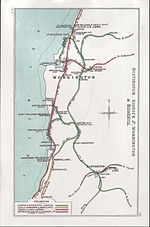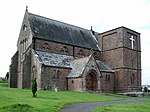Rosehill (Archer Street Halt) railway station

Rosehill (Archer Street Halt) railway station was opened by the Cleator and Workington Junction Railway (C&WJR) on the company's Harrington Branch which connected with the Lowca Light Railway (LLR) at Rosehill to provide a through route from Lowca to Workington Central and beyond.Official, authoritative and regional sources variously refer to the halt as Rosehill (Archer Street Halt), Rosehill, Rose Hill and simply Archer Street. Sources also refer inconsistently to this halt and the nearby unadvertised platform at the top of Rosehill (Rose Hill) as Rose Hill, Rosehill, Rose Hill Platform and Rose Hill Junction. Some sources imply that there was only ever one halt at Rose Hill, that being at Archer Street. Sources agree that the halt opened when the line was opened to advertised trains on 2 June 1913, though they remain silent whether unadvertised workmen's trains ran before then. All agree that the halt closed to advertised passenger trains on 31 May 1926 and to closed completely when unadvertised workmen's trains were withdrawn on 1 April 1929.
Excerpt from the Wikipedia article Rosehill (Archer Street Halt) railway station (License: CC BY-SA 3.0, Authors, Images).Rosehill (Archer Street Halt) railway station
Archer Street,
Geographical coordinates (GPS) Address Nearby Places Show on map
Geographical coordinates (GPS)
| Latitude | Longitude |
|---|---|
| N 54.6098 ° | E -3.5645 ° |
Address
Archer Street
Archer Street
CA14 5QJ , Salterbeck
England, United Kingdom
Open on Google Maps







